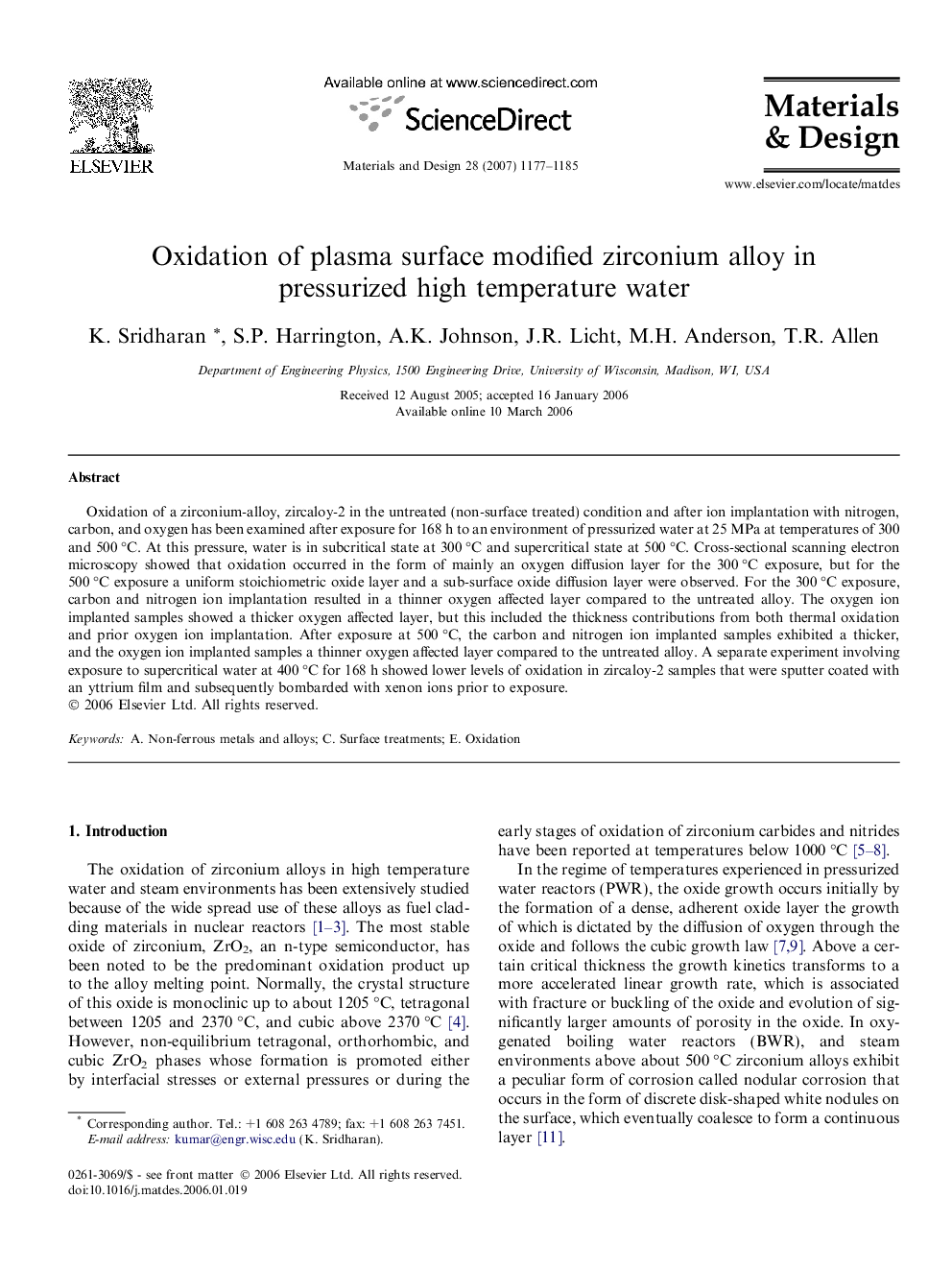| Article ID | Journal | Published Year | Pages | File Type |
|---|---|---|---|---|
| 833763 | Materials & Design (1980-2015) | 2007 | 9 Pages |
Oxidation of a zirconium-alloy, zircaloy-2 in the untreated (non-surface treated) condition and after ion implantation with nitrogen, carbon, and oxygen has been examined after exposure for 168 h to an environment of pressurized water at 25 MPa at temperatures of 300 and 500 °C. At this pressure, water is in subcritical state at 300 °C and supercritical state at 500 °C. Cross-sectional scanning electron microscopy showed that oxidation occurred in the form of mainly an oxygen diffusion layer for the 300 °C exposure, but for the 500 °C exposure a uniform stoichiometric oxide layer and a sub-surface oxide diffusion layer were observed. For the 300 °C exposure, carbon and nitrogen ion implantation resulted in a thinner oxygen affected layer compared to the untreated alloy. The oxygen ion implanted samples showed a thicker oxygen affected layer, but this included the thickness contributions from both thermal oxidation and prior oxygen ion implantation. After exposure at 500 °C, the carbon and nitrogen ion implanted samples exhibited a thicker, and the oxygen ion implanted samples a thinner oxygen affected layer compared to the untreated alloy. A separate experiment involving exposure to supercritical water at 400 °C for 168 h showed lower levels of oxidation in zircaloy-2 samples that were sputter coated with an yttrium film and subsequently bombarded with xenon ions prior to exposure.
